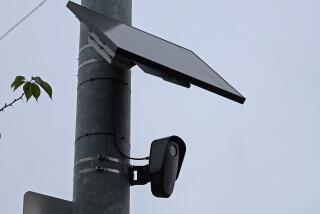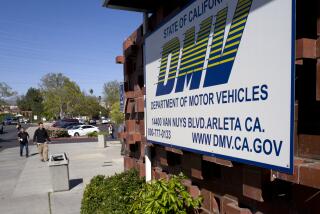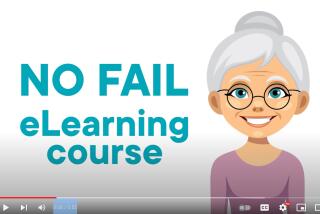Traffic School in the Video Age
- Share via
Hillary Butorac is a traffic school pro. She’s attended four times. And when she got another ticket last week for making an illegal left turn, Butorac figured she was in for another dull Saturday of driver detention.
But when she went to court, the 29-year-old actor from Hancock Park got a pleasant surprise: She received the option of a take-home traffic course to complete at her own pace.
“I loved the fact that I could be in my home, in my pajamas, watching the video,” Butorac said. “We’re getting all information-aged out. The video is like MTV, all quick cuts, very cool, much better than going to traffic school all Saturday.”
She is taking part in a new program, now in effect in Los Angeles, Riverside, Santa Barbara and Ventura counties, that allows motorists to complete traffic safety training using a home computer and VCR.
For $39.99, students rent three instructional videotapes in English or Spanish and a briefcase-sized computer terminal and keyboard to complete an eight-hour course at home. The course is part of a partnership between U.S. Interactive, a Houston-based communications firm, and Blockbuster Video, where students pick up the materials.
The innovative approach was introduced in Ventura County in January and has expanded to 21 of 25 courts in Los Angeles County.
The take-home program is available to motorists who haven’t been to traffic school in 18 months. The Ventura County model was one of 12 court programs recently recognized by the Judicial Council of California and honored with the Ralph N. Kleps Improvement in the Administration of the Courts Award.
“It assists individuals who might have problems attending Saturday afternoon classes or evening classes,” said Vince Ordonez, assistant executive officer in Ventura County’s superior and municipal courts.
Nearly 97,000 people receive traffic citations in Ventura County each year and an average of 1,800 drivers attend traffic school each month. During the first seven months of 1997, 2,692 people used the county’s computerized take-home course, according to Ventura County court records.
“For people with child care problems or whose work schedules won’t allow them to take [daylong or evening] classes and those with health problems it is a convenience and option,” Ordonez said.
Students plug the computer’s on-board modem into a phone line to dial a toll-free number available 24 hours a day and log into the testing system. Participants have three days to complete the course and return the equipment to the video store. The test questions are scored and participants are notified of success or failure.
If a person passes, the information is immediately downloaded from Houston to the court’s mainframe computer and the driver’s case is updated to indicate that traffic school has been completed. Then the information is uploaded to the Department of Motor Vehicles computer, without the need for clerical input.
Students who fail can get another chance to complete the course, and have the option of reviewing their mistakes with an instructor by phone.
In some courthouses, there are other take-home style courses in use, including an Internet-based exam in several Los Angeles courts, video-only courses, and workbook exam courses, but Ordonez said the interactive course provides a higher level of security not found in the other take-home alternatives.
Motorists are asked 30 multiple choice questions about California driving rules and the video. In addition, students are asked questions to verify their identity, said Scott Owens, owner of U.S. Interactive.
Riverside County officials established the program through Blockbuster in May, in addition to offering six other take-home courses for traffic offenders. Santa Barbara County began offering it in July.
“Nothing is foolproof. Just like anything else, there are going to be people who try to beat the system,” said Michael Bayne, an assistant executive officer in Riverside County courts.
He said the program can be effective because it reinforces driving fundamentals in the video and exam.
“Some people are very visual [oriented] as opposed to listening or reading,” Bayne said. “The younger generation who are used to watching television for years are going to be used to it.”
More to Read
Sign up for Essential California
The most important California stories and recommendations in your inbox every morning.
You may occasionally receive promotional content from the Los Angeles Times.










